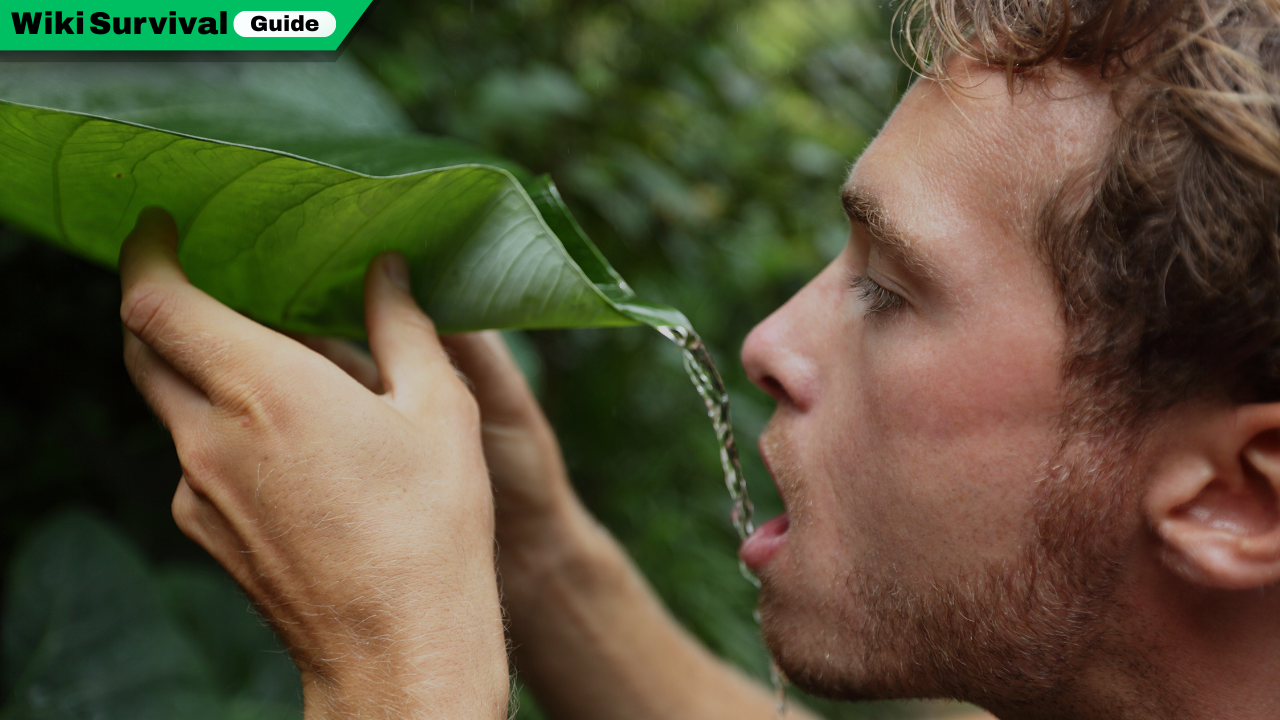Master the Essential Rainforest Survival Guide: Tips to Thrive in the Jungle at WikiSurvivalGuide.com. Learn 10 vital skills to navigate, find food, and stay safe in the rainforest’s challenging terrain in 2025!
Why Rainforest Survival Is Challenging
Rainforests, covering 2% of Earth but hosting 50% of its species, are dense, humid, and teeming with life, per 2024 ecological data. Annual rainfall of 80–400 inches, venomous wildlife, and thick vegetation make survival tough, with 70% of unprepared adventurers facing risks like dehydration or infection.
Key Survival Priorities
Prioritize shelter, water, and food within the first 24 hours, as dehydration can impair cognition in 12 hours, per 2024 survival studies. Mental resilience is critical, as panic increases errors by 60%. Navigation and predator avoidance are secondary but essential for long-term survival. Check More Here:- Ultimate Whiteout Survival Exploration Guide: Strategies and Lineups in 2025
Dangers to Avoid
Mosquitoes, carrying malaria (1 million deaths yearly), and toxic plants pose major threats, per 2024 CDC reports. Wet feet risk trench foot (infection within 24 hours), while poor navigation leads to 80% of lost hiker cases. Knowledge of local hazards reduces risks by 50%.
Preparation Essentials
Pack lightweight gear (10–15 lbs) like tarps, water purifiers, and machetes (30 min prep). Study local flora/fauna (1 hr) and practice orienteering (2 hrs). Budget $100–$300 for a basic kit, per 2024 gear surveys. Visit WikiSurvivalGuide.com for gear lists and training tips.
Who Needs This Guide?
Hikers, eco-tourists, or survival enthusiasts entering rainforests like the Amazon or Khao Sok benefit from these skills. Beginners can learn basics in 5–10 hours, while 90% of adventurers improve outcomes with preparation, per 2024 survival course data.

Survival Tips Table
| Tip Number | Skill | Purpose | Time to Execute |
|---|---|---|---|
| 1 | Build a Waterproof Shelter | Stay dry, avoid hypothermia | 60 min |
| 2 | Find Safe Drinking Water | Prevent dehydration | 30 min |
| 3 | Identify Edible Plants | Secure food safely | 20 min |
| 4 | Navigate Using Natural Signs | Avoid getting lost | 15 min |
| 5 | Protect Against Mosquitoes | Prevent disease | 10 min |
10 Essential Tips to Thrive in the Jungle
1. Build a Waterproof Shelter
Description: A shelter protects against rain and hypothermia, critical as 70% of rainforest nights drop to 60°F, per 2024 climate data.
Process: Select a dry, elevated site away from water (5 min). Use branches for a frame (15 min). Cover with large leaves or a tarp, securing with vines (20 min). Add a rainfly above (10 min). Insulate floor with dry leaves (10 min).
Benefits/Drawbacks: Prevents illness; takes effort in dense terrain. Cost: $0–$20 (tarp). Maintenance: Check for leaks (5 min daily).
Tools: Tarp, machete, cordage.
Tip: Angle the roof to divert rainwater.
2. Find Safe Drinking Water
Description: Dehydration kills in 3 days; rainforest streams often carry parasites, per 2024 health reports.
Process: Locate running water via animal tracks (10 min). Collect rainwater in leaves or a poncho (5 min). Purify with tablets or boil (10 min). Store in a clean container (5 min).
Benefits/Drawbacks: Ensures hydration; purification delays drinking. Cost: $5–$30 (purifier). Maintenance: Clean containers (5 min).
Tools: Water purifier, pot, poncho.
Tip: Angle large leaves into a container overnight for dew.
3. Identify Edible Plants
Description: Bananas, figs, and Brazil nuts are safe, but 30% of rainforest plants are toxic, per 2024 botanical studies.
Process: Study local edibles pre-trip (1 hr). Test unknown plants: smell, rub on skin, taste small amount (10 min). Wait 8 hours for reactions (8 hrs). Eat if safe (5 min).
Benefits/Drawbacks: Sustains energy; misidentification risks poisoning. Cost: $0. Maintenance: None.
Tools: Field guide, knife.
Tip: Avoid brightly colored or bitter plants.
4. Navigate Using Natural Signs
Description: Dense canopies block GPS; 80% of lost hikers fail to use natural cues, per 2024 rescue data.
Process: Observe sun position for direction (5 min). Note moss on trees (shadier side indicates north in Southern Hemisphere) (5 min). Follow animal trails to water (5 min). Mark path with notches (5 min).
Benefits/Drawbacks: Prevents disorientation; requires practice. Cost: $0. Maintenance: Update markers (5 min).
Tools: Compass, knife.
Tip: Track the sun’s arc to maintain a straight path.
5. Protect Against Mosquitoes
Description: Mosquitoes spread malaria, killing 1 million yearly; bites increase infection risk by 50%, per 2024 CDC.
Process: Cover skin with long sleeves or mud (5 min). Apply repellent (2 min). Sleep under a net (3 min). Avoid dusk/dawn activity (planning, 5 min).
Benefits/Drawbacks: Reduces disease; mud is uncomfortable. Cost: $5–$15 (repellent, net). Maintenance: Reapply repellent (2 min).
Tools: Mosquito net, repellent, clothing.
Tip: Use mud on exposed skin if repellent runs out.
6. Move Downhill to Find Water
Description: Rivers lead to civilization; 60% of rescues occur near water sources, per 2024 survival stats.
Process: Head downhill, following slopes (10 min). Look for animal trails (5 min). Avoid thorny plants with a stick (5 min). Follow streams to larger rivers (10 min).
Benefits/Drawbacks: Guides to rescue; risky in steep terrain. Cost: $0. Maintenance: None.
Tools: Stick, boots.
Tip: Move slowly to avoid falls on wet slopes.
7. Stay Calm with the S.T.O.P. Method
Description: Panic causes 60% of fatal survival errors; S.T.O.P. (Stop, Think, Observe, Plan) improves decisions, per 2024 training data.
Process: Stop moving when lost (1 min). Think about resources and risks (5 min). Observe surroundings for landmarks (5 min). Plan next steps (5 min).
Benefits/Drawbacks: Enhances clarity; requires discipline. Cost: $0. Maintenance: None.
Tools: None.
Tip: Breathe deeply to steady nerves before planning.
8. Signal for Rescue
Description: Signals increase rescue chances by 70%, per 2024 survival studies, especially in dense jungles.
Process: Build three fires in a triangle (30 min). Use green leaves for smoke (5 min). Clear a small area for visibility (10 min). Whistle or shout in bursts of three (5 min).
Benefits/Drawbacks: Attracts help; fire-building is time-intensive. Cost: $0–$10 (whistle). Maintenance: Tend fires (10 min/hr).
Tools: Lighter, whistle, green leaves.
Tip: Use a mirror to reflect sunlight for daytime signals.
9. Avoid Dangerous Wildlife
Description: Snakes, jaguars, and piranhas injure 5% of jungle travelers yearly, per 2024 wildlife reports.
Process: Learn local species pre-trip (1 hr). Walk noisily to scare animals (5 min). Avoid rivers at dawn/dusk (planning, 5 min). Check boots for insects (2 min).
Benefits/Drawbacks: Minimizes attacks; limits movement times. Cost: $0. Maintenance: Stay vigilant (5 min).
Tools: Boots, stick.
Tip: Tap ground with a stick to deter snakes.
10. Maintain Foot Health
Description: Trench foot from wet feet can lead to gangrene in 24–48 hours, per 2024 medical data.
Process: Dry feet every 4–6 hours (5 min). Change socks if available (2 min). Elevate feet at night (5 min). Apply powder or oil to prevent moisture (3 min).
Benefits/Drawbacks: Prevents infection; requires dry materials. Cost: $0–$5 (socks). Maintenance: Check feet daily (5 min).
Tools: Socks, powder, dry cloth.
Tip: Wrap feet in plastic bags under boots for extra protection.
Essential Gear Table
| Gear Item | Use | Cost Range |
|---|---|---|
| Tarp | Shelter, rainwater collection | $10–$50 |
| Water Purifier | Safe drinking water | $5–$30 |
| Machete | Clear vegetation, build shelter | $15–$40 |
| Mosquito Net | Insect protection | $5–$20 |
| Compass | Navigation | $5–$25 |
Tips for Rainforest Survival
- Pack Light: Carry 10–15 lbs of gear to stay mobile (30 min packing).
- Learn Flora/Fauna: Study local species pre-trip to avoid dangers (1 hr).
- Practice Navigation: Train with a compass for 2 hours to build confidence.
- Stay Dry: Use tarps and dry socks to prevent infections (10 min daily).
- Visit WikiSurvivalGuide.com: Access survival guides and gear recommendations.
Conclusion
Essential Rainforest Survival Guide: Tips to Thrive in the Jungle equips you with 10 critical skills to conquer the rainforest’s challenges, from building shelters to avoiding malaria. With preparation and resilience, you’ll navigate dense jungles safely. Visit WikiSurvivalGuide.com for more survival tips and share your journey on Instagram with #WikiSurvivalGuide!
Frequently Asked Questions
What are the biggest dangers in a rainforest?
Mosquitoes (malaria), toxic plants, wet feet (trench foot), and disorientation pose major risks, mitigated by preparation and vigilance.
How do I find safe water in the jungle?
Collect rainwater in leaves or purify stream water with tablets or boiling to avoid parasites, ensuring hydration within 24 hours.
Can I eat jungle plants safely?
Yes, if identified (e.g., bananas, figs), but test unknown plants cautiously, as 30% are toxic; use a field guide.
How do I navigate dense rainforest terrain?
Use the sun, moss on trees, and animal trails, marking your path to avoid circling, and carry a compass for accuracy.
Where can I learn more survival skills?
Visit WikiSurvivalGuide.com for guides on jungle survival, gear lists, and training tips tailored for 2025 adventurers.




Leave a Comment